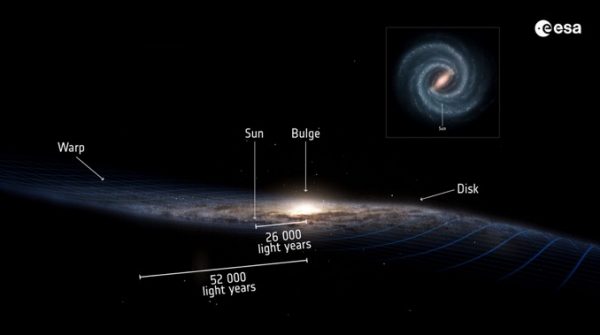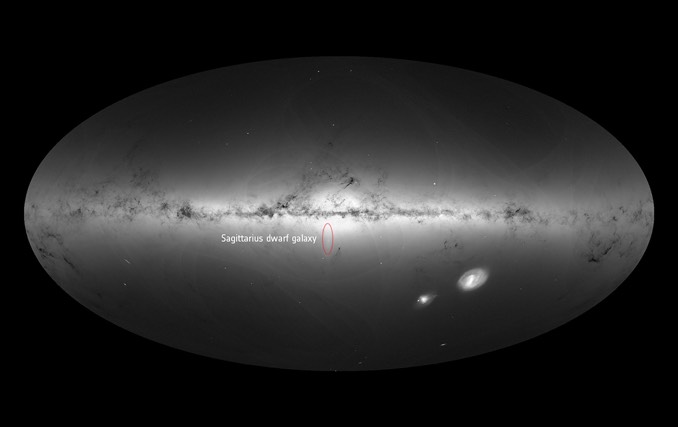GAIA data indicates ongoing collision causing Milky Way’s warp – Astronomy Now Online

The European Space Agency’s star-mapping Gaia satellite confirms the Milky Way’s disc is warped, curving slightly down on one side and up on the other, a gravitational disturbance that may have been caused by a collision with a smaller galaxy.
Astronomers have known since the 1950s that the galactic disc, where most of the Milky Way’s stars reside, is warped, and multiple theories have been suggested to explain it. One possibility was the effects of the intergalactic magnetic field. Another was the gravitational effects of an asymmetric halo of dark matter.
The Gaia data confirms the warp’s existence and as well as previous hints that it changes orientation, precessing as the galaxy rotates like the wobble of a spinning top. And the speed of that precession is faster than earlier explanations would allow, raising the possibility of a more powerful influence. Like a galactic collision.
“We measured the speed of the warp by comparing the data with our models,” said Eloisa Poggio of the Turin Astrophysical Observatory in Italy and the lead author of a study published in Nature Astronomy. “Based on the obtained velocity, the warp would complete one rotation around the centre of the Milky Way in 600 to 700 million years. That’s much faster than what we expected based on predictions from other models, such as those looking at the effects of the non-spherical halo.”
The Sun completes one orbit around the Milky Way’s core ever 220 million years.

“The Sun is at the distance of 26,000 light years from the galactic centre where the amplitude of the warp is very small,” Poggio said. “Our measurements were mostly dedicated to the outer parts of the galactic disc, out to 52,000 light years from the galactic centre and beyond.”
The data do not indicate which galaxy might have collided with the Milky Way or when the collision began. One contender is a dwarf galaxy known as Sagittarius, which may have blown through the Milky Way’s disc several times and probably will be eventually absorbed.
“With Gaia, for the first time, we have a large amount of data on a vast amount stars, the motion of which is measured so precisely that we can try to understand the large scale motions of the galaxy and model its formation history,” said Jos de Bruijne, Gaia deputy project scientist. “This is something unique. This really is the Gaia revolution.”






